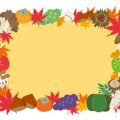What is Mulch and Why is it Important?
Mulch might look like a simple layer of wood chips or straw on top of your soil, but its role in the American garden goes far beyond appearances. At its core, mulch is any material spread over the surface of the soil to serve a protective function. While many beginners focus on how mulch gives garden beds a tidy, finished look, seasoned gardeners know it’s about so much more than curb appeal. Mulch acts as a natural barrier against weeds, locks in precious moisture during hot American summers, and keeps soil temperatures more stable throughout the year. It also breaks down over time, adding organic matter back into the earth—something every healthy garden needs. Skipping this step is one of the most common rookie mistakes and can lead to unnecessary headaches down the road. In short, mulching isn’t just an aesthetic choice; it’s a fundamental practice that supports strong plants and easier maintenance for gardeners coast to coast.
2. Common Reasons Beginners Skip Mulching
It’s surprisingly common for new gardeners in America to leave mulch out of their plans, even though it’s one of the most straightforward ways to boost garden health and save time. There are a few typical reasons why this happens. First, many folks simply don’t know how much value mulching brings—especially if they’re starting with just a couple of raised beds or a small backyard plot. There’s also a perception that mulching is expensive or labor-intensive, which can be off-putting when you’re already investing in tools, seeds, and soil amendments. Let’s break down some of the main barriers and misconceptions:
| Reason | Explanation | Why It’s a Misconception |
|---|---|---|
| Cost Concerns | Bagged mulch at garden centers can look pricey at first glance. | Many free or low-cost options exist, like grass clippings, leaves, or even newspaper. |
| Extra Effort | Spreading mulch is seen as an added chore on top of planting and watering. | Proper mulching actually reduces future work by keeping weeds down and soil moist. |
| Lack of Knowledge | Beginners may not realize how mulch benefits plant health and soil life. | Mulch mimics natural forest floors—nature’s own way of protecting soil. |
| Aesthetic Worries | Some fear mulch will make their gardens look messy or unfinished. | A well-chosen mulch can tidy up beds and give a clean, intentional look. |
| Misunderstood Value | People underestimate how much mulch helps with water retention and temperature control. | Even a thin layer can make a big difference in garden resilience during hot spells or drought. |
If you’ve been skipping mulch for any of these reasons, you’re definitely not alone. But understanding the true benefits—and busting those myths—can help you set up your garden for success right from the start.
![]()
3. Consequences of Skipping Mulch
If you neglect mulching in your garden, you’re setting yourself up for some classic headaches—especially if you live in the varied climates across the United States. Moisture loss is one of the most immediate problems. In hot and dry areas like Arizona or Southern California, bare soil dries out fast under the relentless sun, making it tough to keep plants hydrated without constant watering. Even in cooler regions, unmulched soil loses moisture more quickly to wind and sun exposure, which means higher water bills and stressed plants.
Another big issue is weed outbreaks. In places like the Midwest or Southeast, weeds can take over faster than you’d believe, especially after a good summer rain. Without mulch acting as a physical barrier, weed seeds get all the sunlight and open ground they need to sprout and spread—sometimes outcompeting your veggies or flowers for nutrients and space.
Perhaps the most overlooked consequence is poor soil health. Mulch breaks down over time and feeds beneficial microbes in the soil—a process vital for long-term fertility. In regions with heavy clay (like much of the South) or sandy soils (think Florida), skipping mulch means missing out on organic matter that improves structure and nutrient content. Over time, this can leave your garden beds compacted, depleted, and less productive.
The bottom line? Ignoring mulch doesn’t just mean extra work; it leads to real setbacks—wasting water, fighting weeds non-stop, and struggling with tired, worn-out soil no matter where you garden in America.
4. Popular Mulch Types for American Gardens
When it comes to mulching, the options can feel overwhelming, especially for beginners who may not realize how much their choice impacts garden health and productivity. Neglecting mulch—or picking the wrong type—can make or break a season. Here’s a breakdown of some of the most common mulch types you’ll find in American gardens, along with practical advice on what works best in different regions and for various crops.
Bark Mulch
Bark mulch, usually made from pine, cedar, or hardwood, is widely available at garden centers across the US. It breaks down slowly, making it ideal for perennial beds and landscaping where you want long-term weed suppression and moisture retention. Cedar bark also helps repel some insects naturally. In wetter climates like the Pacific Northwest, bark mulch is a staple because it resists compaction and fungal growth.
Straw Mulch
Straw is popular among vegetable gardeners, especially in the Midwest and South. It’s light, easy to spread, and excellent for keeping fruiting crops (like strawberries and melons) clean and off the soil. Be sure to use clean straw (not hay) to avoid introducing weed seeds. Straw decomposes faster than bark but does wonders for soil structure as it breaks down.
Leaf Mulch
Fallen leaves are one of the most accessible mulch sources for home gardeners, particularly in the Northeast and Midwest where deciduous trees are abundant. Shredded leaves decompose quickly, enriching the soil with organic matter and earthworm activity. They’re great for vegetable beds and around shrubs but may blow away if left unshredded or uncovered.
Mulch Comparison Table
| Mulch Type | Best For | Availability | Regional Suitability |
|---|---|---|---|
| Bark Mulch | Perennial beds, landscaping | Garden centers nationwide | Pacific NW, Northeast, Southeast |
| Straw | Vegetable gardens, fruit crops | Farm supply stores, local farms | Midwest, South, West Coast |
| Shredded Leaves | Vegetables, shrubs, flower beds | Your own yard (fall) | Northeast, Midwest |
| Pine Needles (Pine Straw) | Acid-loving plants (blueberries), paths | Southeast US in particular | Southeast, parts of West Coast |
| Compost/Mature Manure | Nutrient boost for veggies/flowers | Home compost bins, garden suppliers | Nationwide (especially where livestock is common) |
Choosing the Right Mulch by Region & Crop
The right mulch depends on your climate, soil type, and what you’re growing. Gardeners in humid areas often prefer bark or pine straw since they resist fungus and matting; dry-climate growers might lean toward shredded leaves or compost to maximize water retention. Vegetable growers frequently rotate between straw during summer and shredded leaves or compost in fall to keep soil healthy year-round.
Selecting suitable mulch isn’t just about looks—it’s about giving your plants their best shot at thriving while saving yourself time on watering and weeding. Taking time to match your mulch to your regional needs pays off every season.
5. Tips for Mulching Right the First Time
If you’re new to gardening in the U.S., getting mulch right can save you time, water, and a lot of headache down the road. Here’s a hands-on guide to mulching like a pro from the start.
Choose the Right Mulch
For most American gardens, shredded hardwood or bark mulch is a popular go-to for flower beds and around trees. Vegetable gardeners often prefer straw or untreated grass clippings. Avoid using dyed mulches or anything that looks moldy or has an off smell—it might harm your soil.
How Much Mulch Is Enough?
Aim for a 2-3 inch layer for most beds—enough to suppress weeds and retain moisture, but not so much that it suffocates your plants’ roots. For finer mulches like compost or leaf mold, stick closer to 2 inches. Around trees, keep mulch away from the trunk by at least 3 inches to avoid rot (think “donut” not “volcano”).
When Should You Mulch?
The best time to lay down mulch is in spring after the soil has warmed up but before weeds really take off. Fall mulching also works well for perennials and trees in colder regions—just wait until after the first hard frost.
Common Mulching Mistakes to Dodge
- Piling up against stems and trunks: This invites pests and disease. Always leave some breathing room.
- Using too much mulch: More isn’t better; thick layers can suffocate roots and repel water.
- Mulching over weeds: Pull out existing weeds first, or you’ll just give them cozy cover to thrive under.
Pro Tip from Seasoned Growers
If you have heavy clay soil—a common challenge in many parts of the U.S.—use a coarse mulch like pine bark nuggets to help improve drainage over time. And remember: freshen up your mulch layer every year to keep things tidy and effective.
6. Real-Life Success Stories
Learning the Hard Way: Amanda’s Tomato Troubles in Texas
Amanda, a first-time gardener from Austin, TX, thought mulching was just an extra step she could skip. That summer, her tomato plants looked promising at first, but by July, they were struggling—wilting during heat waves and invaded by weeds. After talking to experienced neighbors, Amanda decided to mulch with shredded bark the following season. The difference was night and day: her soil stayed moist, weeds barely appeared, and her tomatoes yielded twice as much fruit. Amanda now tells every beginner: “Don’t underestimate mulch; it’s your garden’s best friend in the southern sun.”
Pacific Northwest Perseverance: How Mulch Saved Mark’s Raised Beds
Mark from Portland, OR, loved growing lettuce and spinach but battled constant slug invasions and uneven moisture in his raised beds. He didn’t mulch at first because he assumed rain would handle watering needs. That mistake cost him most of his spring crop to slugs and rot. The next year, Mark tried a thick layer of straw mulch. Not only did the slugs keep away, but the soil retained just the right amount of moisture—even during dry spells. Mark learned firsthand that mulching isn’t just for hot climates; it’s crucial for pest control and stable soil everywhere.
Midwest Wisdom: Sarah’s Backyard Transformation
In Chicago, Sarah wanted a lush backyard vegetable patch but found herself overwhelmed with weeds and compacted soil after her first season without mulch. She spent more time weeding than harvesting. After reading advice on local gardening forums, she used leaf mulch collected from autumn clean-up. By mid-summer the next year, her weed problem was cut in half, earthworms flourished in her softer soil, and her harvest improved significantly. Sarah now advocates using whatever organic mulch is available locally—a true Midwest solution.
Key Takeaways from These Stories
- Skipping mulch leads to common problems: weeds, dry or waterlogged soil, pests
- Simple materials like straw, leaves, or wood chips can make a dramatic difference
- Every region benefits from mulching—but the specific challenges may vary
Final Thought
If you’re starting out or have struggled in seasons past, learn from these US gardeners’ hard-earned wisdom: don’t neglect mulch if you want healthier plants and easier gardening all around.


